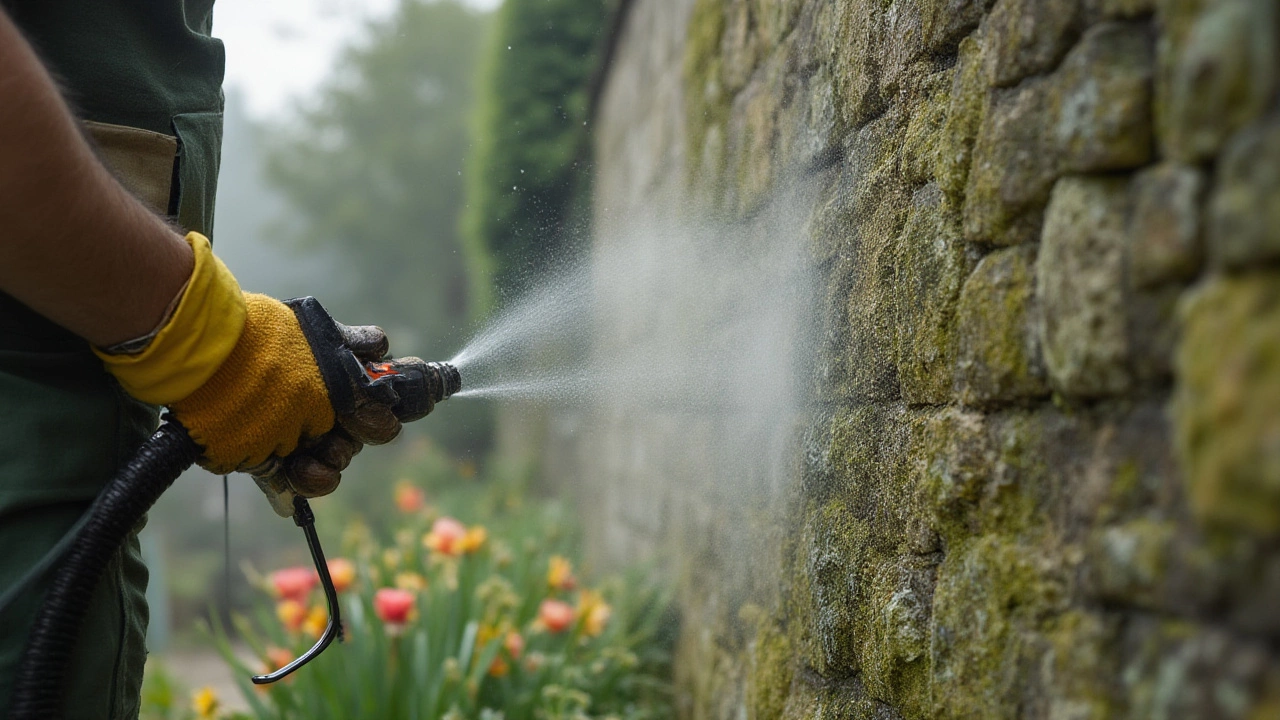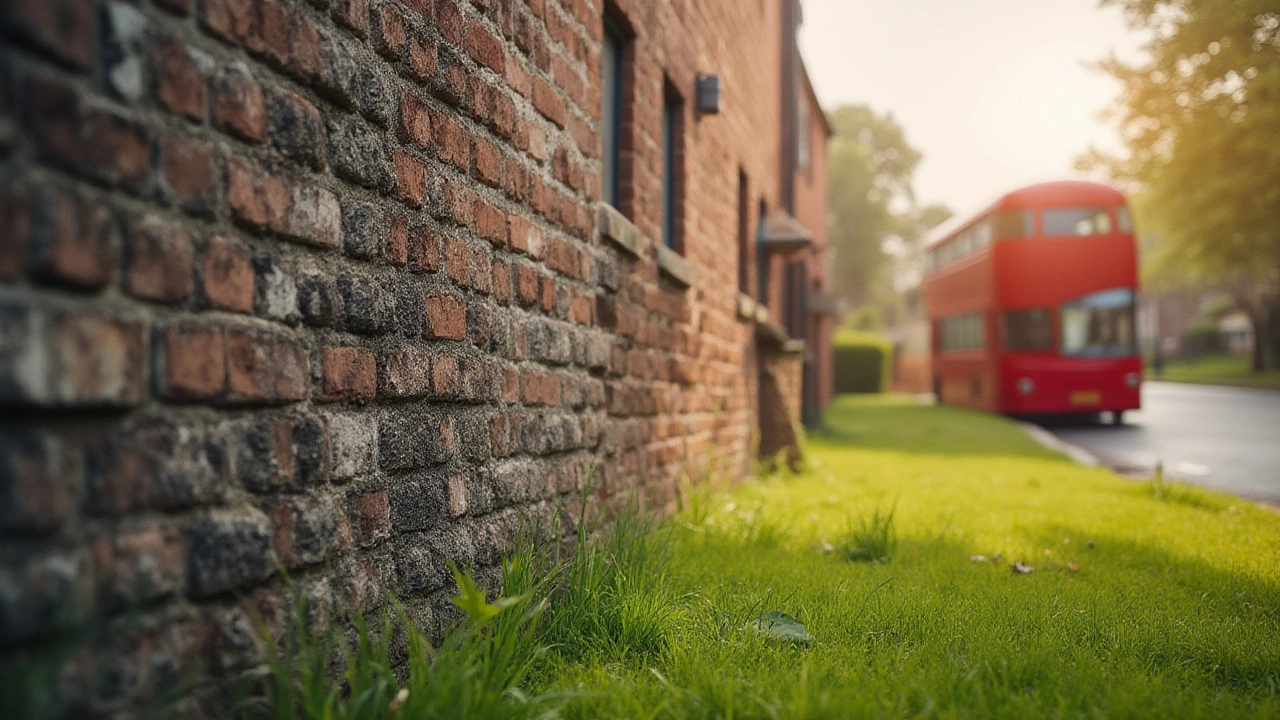Find a black, slimy patch crawling up your siding or spreading across the patio? It’s a nasty surprise, but mold loves damp, shady corners. Most folks grab a pressure washer before anything else, hoping that jet of water will blast off every trace. But does it really wipe out mold—roots and all—or just send spores flying? And are you setting yourself up for a comeback invasion?
The Truth About How Pressure Washers Tackle Mold
Let’s be real: nothing feels more satisfying than blasting a dirty, green wall to sparkling clean. Pressure washers push out water at 1,300 to 3,000 PSI (pounds per square inch), enough to strip paint if you’re not careful. If you use that force on mold, it peels off the top fuzzy layer in seconds. You’ll see instant results—looks like you erased the problem. But here’s where things get trickier.
Mold isn’t just a stain. It sets down roots (hyphae) into porous surfaces like brick, concrete, stone, and even wood. Pressure washing shears off the upper growth, but those roots can sit tight beneath the surface. According to a 2023 study in the Journal of Environmental Mycology, mold treated only with water (even under pressure) came back within weeks, especially during warm, humid weather. The pressure washer acts like a loud broom: it sweeps away what you see, but doesn’t fully disinfect or kill what’s hiding inside.
If you’re dealing with painted vinyl or sealed siding, pressure washing often does a thorough job since mold can’t dig roots easily. On rough brick, porous concrete, and natural wood, mold can bounce back as fast as it grew. The forceful spray also sends clouds of spores into the air. Without proper masks and prep, those spores can settle on clean areas or get into open windows, adding to your headache.
Mold and mildew are different, too. Mold is usually black or green and feels slimy, while mildew is powdery and gray or white. Both thrive in dampness, but mold invades deeper. Cleaning advice often lumps them together, but true mold removal calls for deeper decontamination than mildew cleanup.
Smart Ways to Use a Pressure Washer Against Mold
Pressure washing can still be a helpful part of your arsenal, as long as you use it smartly. Here’s how to tip the scales in your favor and avoid making problems worse:
- Choose the right tip and pressure: Use a nozzle between 25-40 degrees and keep pressure under 2,000 PSI for most home surfaces. Go higher and you risk ripping up paint or even warping wood.
- Always pre-wet the area: Spraying down the area with water first helps reduce airborne spores when you hit it with the washer’s force.
- Add a mold-killing detergent: Plain water alone isn’t effective. Use a cleaner specifically labeled for mold and mildew. Sodium hypochlorite (bleach) or commercial mold removers kill spores and roots. Mix according to instructions—too strong and you’ll damage the surface, too weak and the mold survives.
- Let chemicals sit: Always let the cleaning solution work for 10-15 minutes before pressure washing. This time helps it penetrate and kill hidden mold.
- Avoid pressure washing near windows and doors: You don’t want to blow spores inside or soak wall cavities, which is a recipe for disaster.
- Use protective gear: Always wear a mask (N95 or better), old clothing, and gloves. Mold spores spread quickly; don’t inhale or let them settle in your eyes.
- Rinse thoroughly: Once the mold is gone, rinse away leftover detergent so it doesn’t harm plants or strip surfaces.
DIY mold removal has limits. The U.S. Environmental Protection Agency (EPA) recommends calling in professionals if you see more than 10 square feet of mold or can't pinpoint the moisture source. If you have underlying leaks, roof issues, or constant damp, cleaning won’t help for long. Fix the dampness first or you’ll stay stuck in an endless cleaning loop.

Pressure Washing vs. Other Mold Removal Methods
How does pressure washing stack up against other options? It always wins on speed and instant satisfaction, but other methods dig deeper. Here’s a comparison that clears up the trade-offs:
| Method | Effectiveness | Best Use | Risks |
|---|---|---|---|
| Pressure Washing (with water only) | Removes visible mold, not roots | Tough exterior stains | Spreading spores, limited long-term impact |
| Pressure Washing (with mold detergent) | Kills surface and shallow roots | Concrete, vinyl, stone | Can damage plants/paint, not for delicate wood |
| Scrubbing by hand (with cleaner) | More precise, kills deeper roots | Small patches, delicate surfaces | Labor-intensive, time-consuming |
| Professional remediation | Full removal, treats moisture | Large infestations, hidden mold | Higher cost |
Bleach, vinegar, or hydrogen peroxide can work for smaller areas. You can spray them after pressure washing for another kill shot. But never mix chemicals—some combos release dangerous fumes. Always rinse well to remove leftover residues.
Ever see sorry-looking plants after a power washing session? Mold-killing agents run off with rinse water and can burn flowers or grass. Cover nearby greenery or soak it with plain water before and after washing to shield leaves and roots from harsh chemicals.
How to Keep Mold from Coming Back After Washing
You want this nightmare over—permanently. But pressure washing alone doesn’t guarantee mold is gone for good. Mold shows up wherever there’s warmth and dampness, especially in shaded or north-facing places that stay cool and moist. Even the cleanest home gets hit if those conditions aren’t fixed.
Here are tough lessons homeowners (myself included) have learned about pressure washers and mold:
- Trim shrubs and overhanging branches so sunlight hits problem spots. Mold hates sun.
- Gutters are a mold magnet—keep them clean so water drains away, not down your walls.
- Fix leaky hoses, outdoor spigots, or basement moisture fast. Standing water fuels new outbreaks.
- If you have concrete patios, use a sealer after washing so water can’t soak in and feed new mold colonies.
- Repaint wood with a mold-resistant paint for extra insurance. Look for products carrying the 'mildewcide' label.
Mold spores are sneaky—they drift on the breeze, carried from neighbors’ yards or woods, and land anywhere there’s a bit of moisture. After cleaning, keep surfaces dry as much as you can. Sweep away piles of leaves or debris where water lingers after rain.
So, while blasting away mold with a pressure washer feels awesome (guilty as charged!), it’s rarely a complete fix. Use the pressure washer as your first step, but follow up with mold killers, repairs, and prevention or you’ll find yourself going head to head with green and black stains again—probably sooner than you expect.
